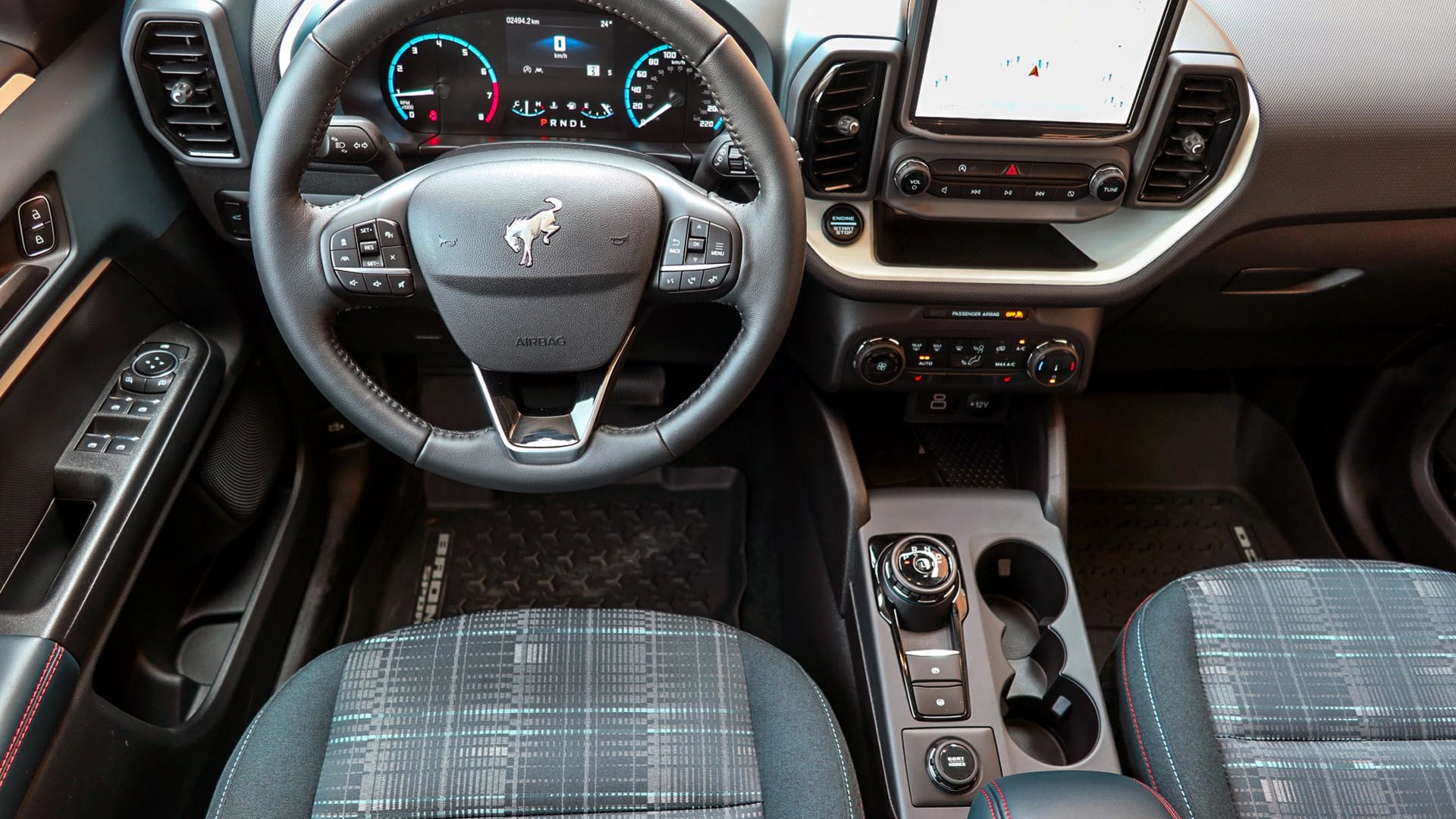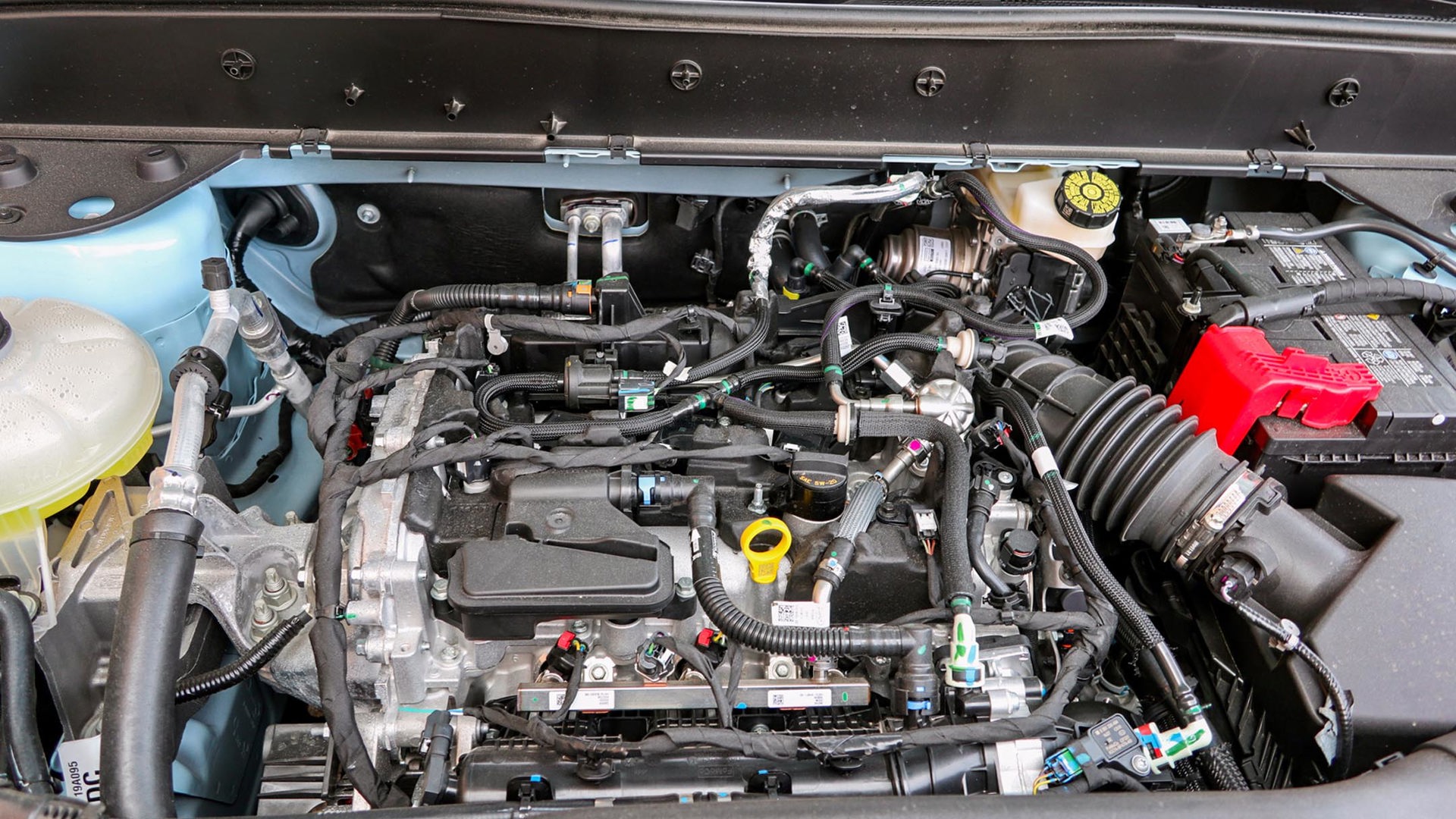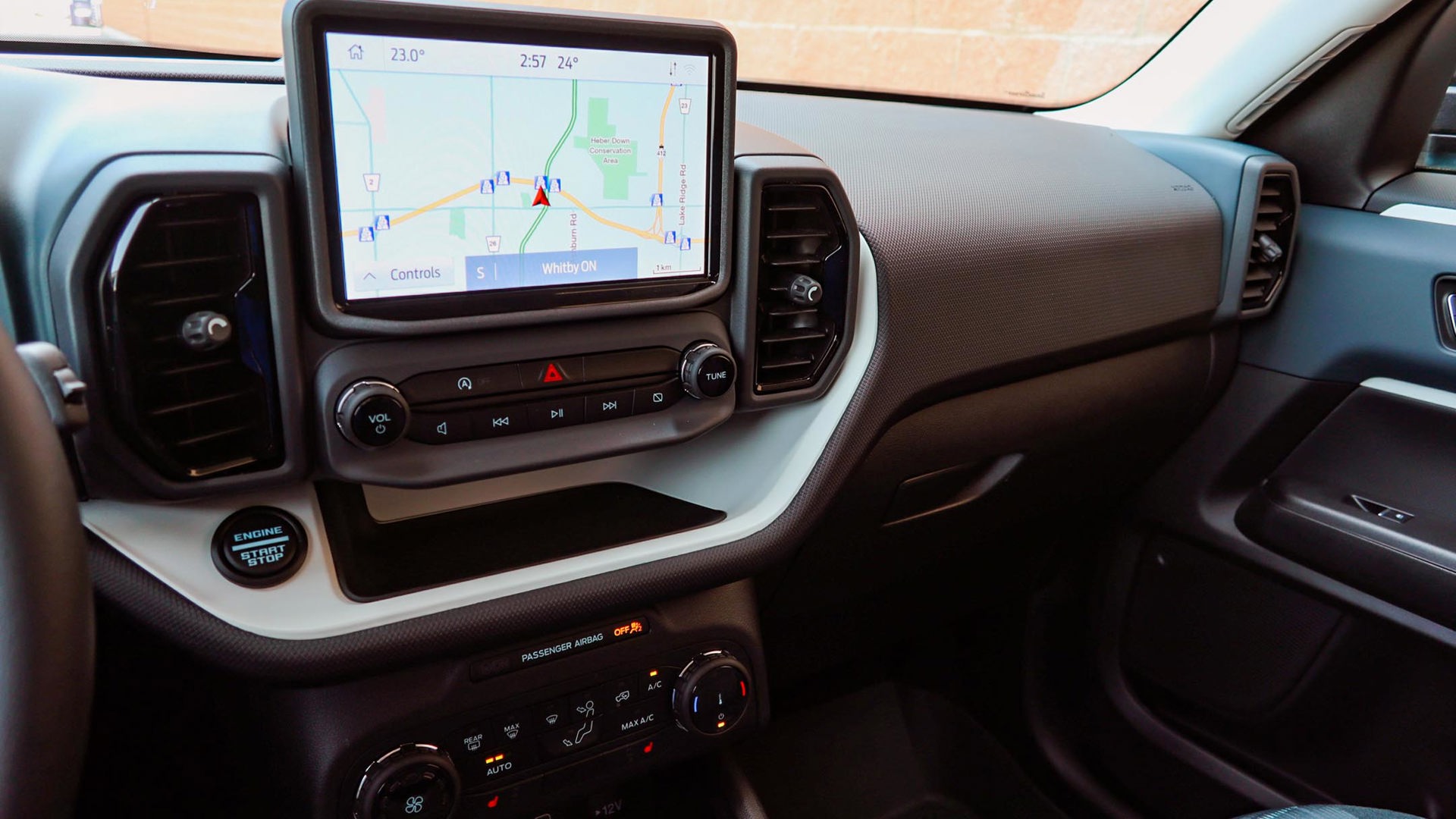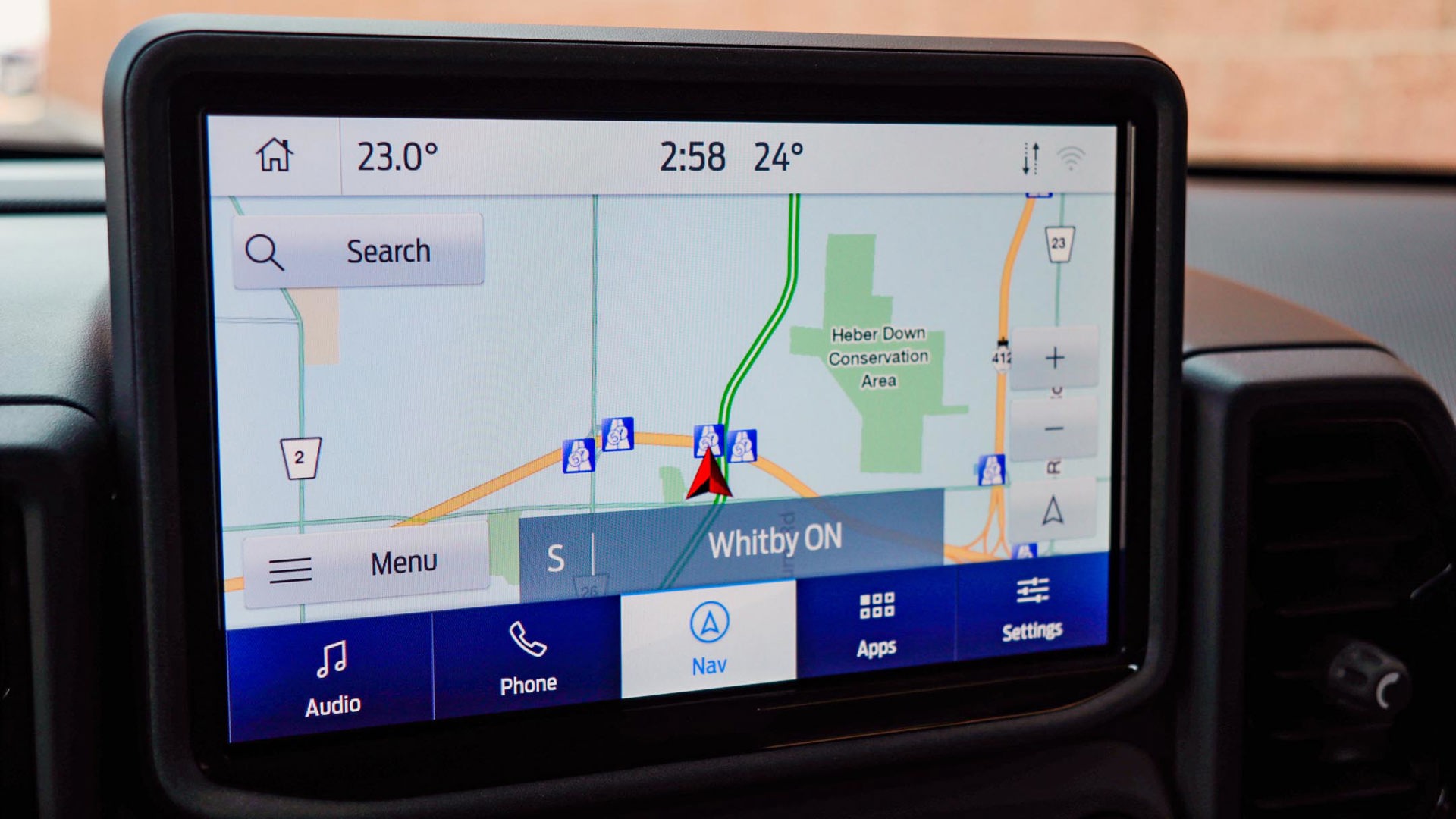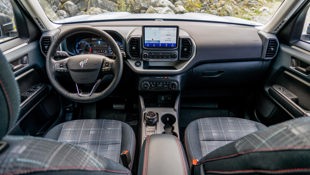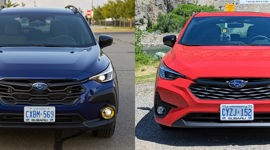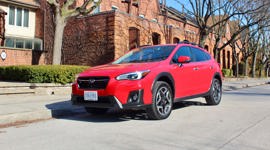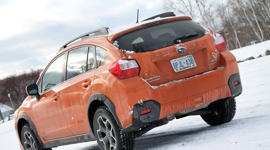Nobody likes math.
That’s why we took the time to crunch the numbers, calculate fuel costs, and break down the vital measurements and specs for the 2024 Ford Bronco Sport and 2024 Subaru Crosstrek – so you don’t have to.
Although these two crossovers may look different, they’re similarly sized, come with standard all-wheel drive (AWD), and are available in rugged trims built to explore the great outdoors.
How Similar Are We Talking?
The Bronco Sport and Crosstrek adopt entirely different design approaches, but their overall exterior dimensions are shockingly similar – well, most of them, at least. In terms of overall length, the Subaru stretches 4,480 mm (176.4 in) from bumper to bumper compared to the Ford’s 4,387 mm (172.7 in). There’s even less separating their respective wheelbases, with the former measuring 2,664 mm (104.9 in) and the latter coming in at 2,670 mm (105.1 in).
When it comes to width the Bronco Sport’s 1,887 mm (74.3 in) bests the Crosstrek’s 1,800 mm (70.9 in), but it doesn’t lead to noticeably more cabin space – but more on that shortly.
Ground clearance varies depending on which trim you choose. For the Crosstrek, the majority of the lineup offers 220 mm (8.7 in), while the Crosstrek Wilderness features 236 mm (9.3 in). Meanwhile, most Bronco Sport trims offer 203 mm (8.0 in), while the Badlands version that’s similar to the Crosstrek Wilderness for its off-road aspirations stands at 229 mm (9.0 in).
Unsurprisingly, it’s in terms of overall height that we find the biggest delta between them. The more upright Bronco Sport stands a total of 1,785 mm (70.3 in) tall, while the Badlands version extends that to 1,813 mm (71.4 in). The more squat Subaru measures 1,600 mm (63.0 in) from the ground to the tops of its roof rails, while the rugged version measures 1,615 mm (63.6 in).
What About the Space Inside?
The Crosstrek has a cargo capacity of 564 L when the rear seats are upright. The Bronco Sport, on the other hand, offers significantly more – a total of 920 L in the same configuration, according to the spec sheet. The Bronco Sport is also offered with a slick storage shelf that can be used to divide the space behind the seats in two while extending outward to become a utility table when camping.
With the rear seats folded down, the Crosstrek’s cargo capacity expands to 1,549 L. The Bronco Sport’s, meanwhile, measures 1,846 L. This is another area where the Ford’s height advantage comes into play, but then Subaru offers a similarly shaped (although slightly larger) Forester for those in need of more space.
Thanks to its height, including a roof that’s taller in the back, the Bronco Sport also boasts more upright space inside for people. There’s 43 mm (1.7 in) more front-seat headroom than the Crosstrek offers, while those in the back get an extra 94 mm (3.7 in). However, when it comes to legroom they’re fairly evenly matched front and rear.
Performance and Efficiency
The Subaru Crosstrek and Ford Bronco Sport both offer two engine options. In the Subaru, the Convenience and Touring trims use a 2.0L flat four-cylinder that makes 152 hp and 145 lb-ft of torque, while the rest of the lineup – Onyx, Limited, and Wilderness – borrow the bigger Forester’s 2.5L unit, with 182 hp and 178 lb-ft of torque available.
The Bronco Sport offers the choice of two turbocharged units: a 1.5L three-cylinder, or a 2.0L four-cylinder. The former makes 181 hp and 190 lb-ft of torque, while the latter pumps out 250 hp to go with 277 lb-ft.
Beyond the numbers, their turbos strapped to the Ford’s engines enhance low-end torque and throttle response compared to the Crosstrek’s naturally aspirated units. Meanwhile, the Crosstrek’s engines are paired with an automatic continuously variable transmission (CVT), while the Bronco Sport gets a conventionally geared eight-speed automatic. All-wheel drive is standard with both crossovers.
Both Crosstrek engines burn virtually the same amount of gas, but the bigger engine makes some much-needed extra output. But when it comes to the Ford, the four-cylinder burns noticeably more gas than the smaller motor – nearly 2.0 L/100 km more in the city, and 1.2 combined.
How Much Do They Cost?
For all their similarities, the Subaru Crosstrek and Ford Bronco Sport are entirely different when it comes to pricing. The cheapest 2024 Crosstrek starts at $31,190 before tax but including a non-negotiable freight fee, while the next-up Touring trim rings in at $34,390. From there the Onyx and its bigger engine is priced at $36,190, and the Limited comes in at $39,190 before the government’s share. And finally, the rugged Wilderness is $40,190.
Notably, the Crosstrek’s lineup is a simple one. There aren’t any options or packages to pick from, aside from some dealer-installed accessories; if you want a better stereo, for example, simply move to the next trim. (On that note, there are three to choose from that boast four-, six-, or 10 speakers.)
Not only is the Bronco Sport offered with packages and extras that add to its asking price, but it’s more expensive than the Subaru. In fact, at $40,090 before tax but including freight, the cheapest 2024 Bronco Sport is priced within $100 of the most expensive Crosstrek.
Next up is the Heritage that starts at $44,090, while the Free Wheeling is priced the same way but looks different, and the Outer Banks is $45,290. Then the Badlands is $48,645, while every one of them can get significantly more expensive with desirable options, some of which are standard on the Crosstrek, like adaptive cruise control.
Which is Better?

Of course, some subjectivity comes into play here; but then the Crosstrek took home the 2024 AutoTrader Award for Best Subcompact SUV for good reason. Now factor in its significantly lower price tag, and it’s easy to see why it’s such a great pick.
On the subject of, well, subjectivity, the Crosstrek offers a lighter and livelier feel that’s a credit to its car-based roots, while its deeper, lower, and more easily-accessed cargo area has its merits, too. It may be smaller, but it makes excellent use of the space – yet one more reason this Subaru is a winner.




